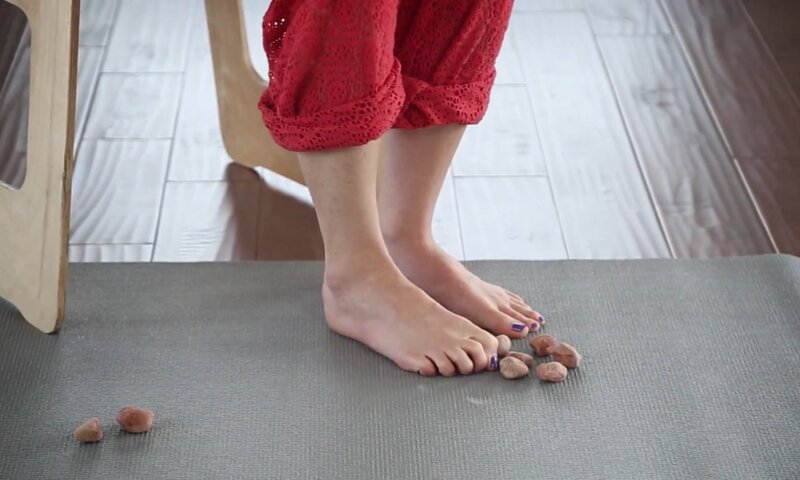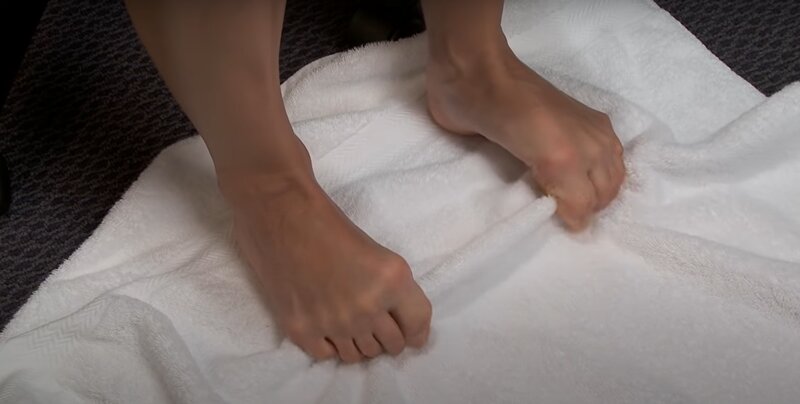Hallux Rigidus is degeneration arthritis. The disorder causes stiffness and, eventually, pain at the joint of the toe. It affects the joint at the bottom of the big toe. According to FootCareMD, this condition affects 1 in every 40 people and is the most affected over 50years. Women are the most affected. The joint is a link of the head of the first toe’s bone, its base, and the tiny bones underneath it. The causes of the Hallux Rigidus condition are not known.
In this article, we will discuss the exercises that can be used to treating this condition. Among other methods, exercising is the most effective way to prevent, postpone, or even treat this condition.
Related: 6 Best Running Shoes for Hallux Rigidus (Men’s and Women’s)
Effective Hallux Rigidus Exercises
Below are six practical exercises that will help avoid Hallux Rigidus.
1. Toe extension exercise.

Being flexible comes with many benefits. Among the benefits are fewer pains and better circulation of blood and nutrients. It is, however, worrying about how people have neglected this vital aspect of health. Fairview recommends toe extension exercise conscious of these benefits. The flexibility of the toe is essential in postponing if not preventing Hallux Rigidus. Below is the procedure of how the toe extension is done;
- While Sitting on a chair, and place your left ankle on your right knee.
- Hold your toes with your left hand and bend the toes backward (gently). Feel a stretch in the undersides of the toes and ball of the foot. Hold for 30 to 60 seconds.
- Repeat in the opposite direction. Bend your toes forward until your foot is pointed and the toes straight. Hold for 30 seconds.
- Repeat this process 4-5 times unless instructed otherwise by a professional
When this procedure is repeated often, the flexibility of the toes will be achieved.
You can also read: Hallux Rigidus Treatment Options | Non-Surgical & Surgical Treatment
2. Dorsiflexion exercise

Dorsiflexion exercise is straightforward. Its main aim is to move the Tibialis muscle (anterior and anticus). This muscle in humans runs from the tibia’s surface down to the metatarsal’s bones of the foot. The dorsiflexion exercise checks the ability of the toe to move in either direction without much pain. To do this exercise effectively, follow these instructions.
- Sit on the floor.
- Straighten your feet out.
- Tie the elastic band on a pole, then wrap it around your foot.
- Pull your toes and slowly until they return to their original position.
- Repeat fifteen times.
To ensure this exercise’s success, you must keep your legs and heels on the floor for support.
3. Marble pick up.

When you have a Hallux Rigidus condition, your plantar flexors are going to be affected. Plantar flexors are the muscles that allow the extension of the ankle so that your foot points downwards. Their normal range is 20-50 degrees from the normal position. The American Academy of Orthopedic Surgeons (AAOS) confirmed that marble pick up exercise is felt at your toes and the top of your foot. Follow this instruction to ensure the practice is effective and efficient.
- Sit on a chair and flatten your feet.
- Place 20 marbles in front of your feet (ensure they are within your reach)
- Pick the marbles one after another, using your toes, and place them in a bowl.
- Repeat the process until all the marbles are in the bowl.
This exercise ensures your toes are functional. The joints will, with time, withstand major tasks.
4. Abduction exercise

In this exercise, the aim is to move the toes sideways. Abduction exercise gets hard sometimes for people due to the advanced state of the Hallux Rigidus. In case this gets hard for you, you should have someone help you in the exercise. Here’s how to do it.
- While sitting on the floor, keep your feet straight.
- Spread your toes apart as much as possible and wait for 15 seconds.
- Bring them together and press them against each other for 15 seconds.
- Repeat this five times.
In case it hard for you, get someone to start you off by holding our fingers, moving them towards each other and away from each other, as stated in the procedure.
5. Flexibility exercise.
Flexibility exercise treats your toe as if it has dislocated. The procedure checks how affected the toe is by the Hallux Rigidus condition. A therapist best does the activity. However, you can do it all by yourself using these instructions.
- Sit on a chair and place your left ankle on your right knee.
- Hold your feet with your left hand at the back of big toe (gently as if you’re touching the joint)
- Using the left hand, pull the fingers as if trying to pull them out of their socket. When still pulling it, start rotating it in a clockwise direction.
This exercise gets challenging if you are experiencing some form of pain in the big toe. In case there is pain, look for another party to help you or a therapist.
6. Towel curl exercise

Like the marble pick up exercise, the towel curl exercise aims to flex your plantar flexors, your toes, and the top of your feet. Plantar flexors are the muscles affected for the Hallux Rigidus condition to occur. A hand towel is a requirement in this exercise. Follow these instructions.
- While sitting on a chair, flatten your feet on the floor.
- Place the hand towel straightened in front of your feet.
- With your feet, grab the center of the towel, and pull it to you.
- Repeat the same process for five times
As the exercise gets more comfortable, add weight to the edges of the towel. Practicing will strengthen your muscles and the joint even more.
Final word
Hallux Rigidus can prevent you from doing a lot of activities like walking correctly. More importantly, avoid doing actions that will take this condition to an advanced state. For instance, wearing narrow shoes will only take the situation to an adverse state. Before thinking about surgeries, you should first opt for non-surgical methods that are safer. The exercises described above will be of great help to you if you follow them well and you’ll recover very soon. Follow them well, and you’ll start seeing change.